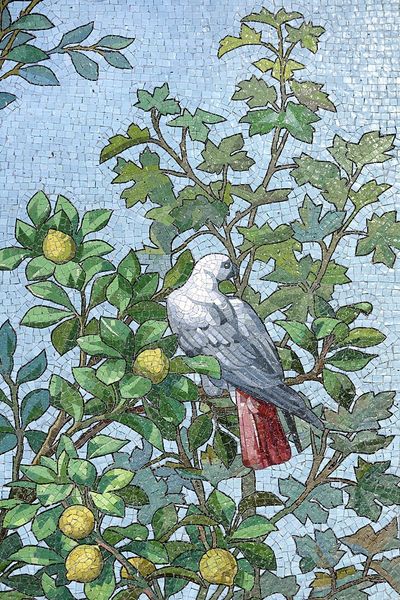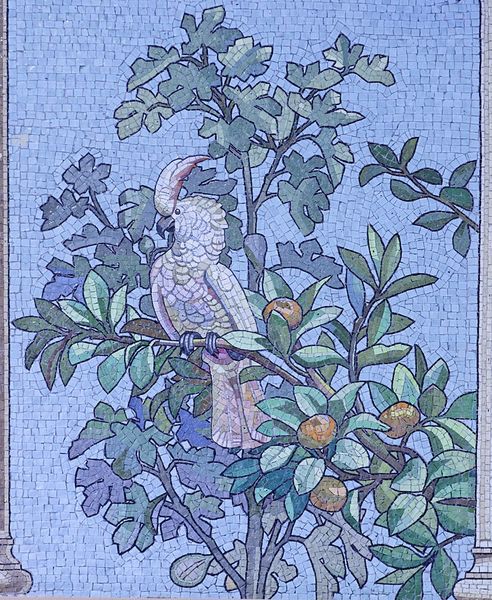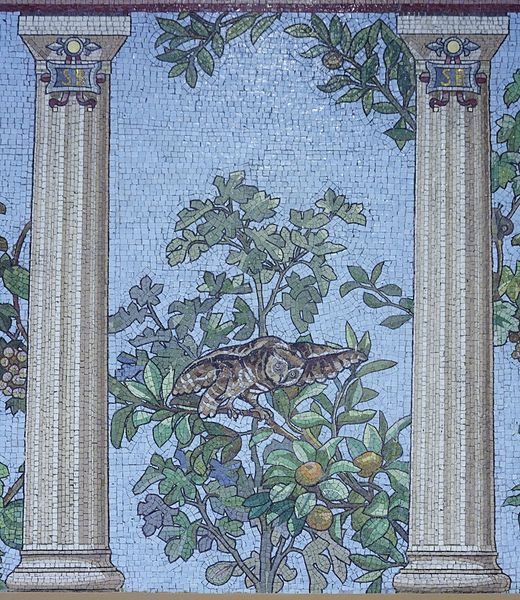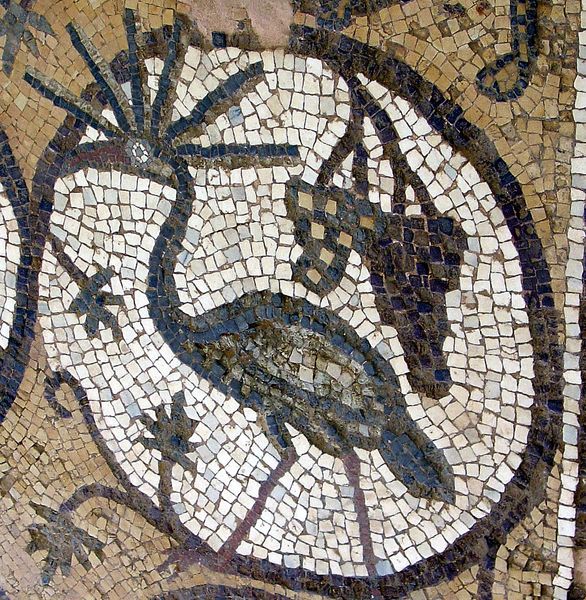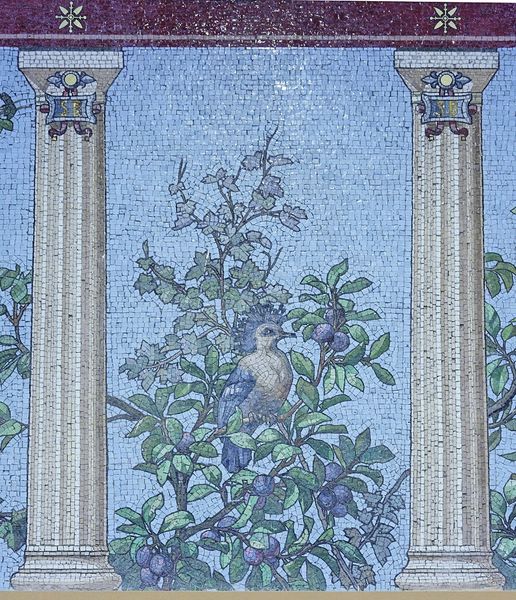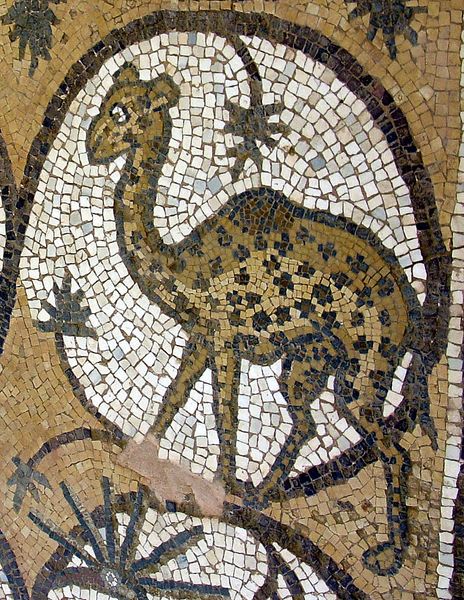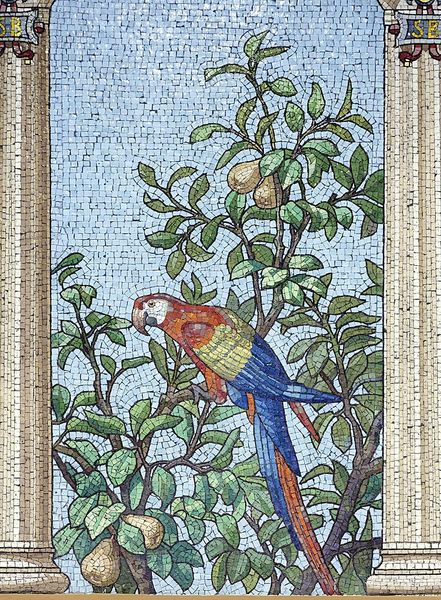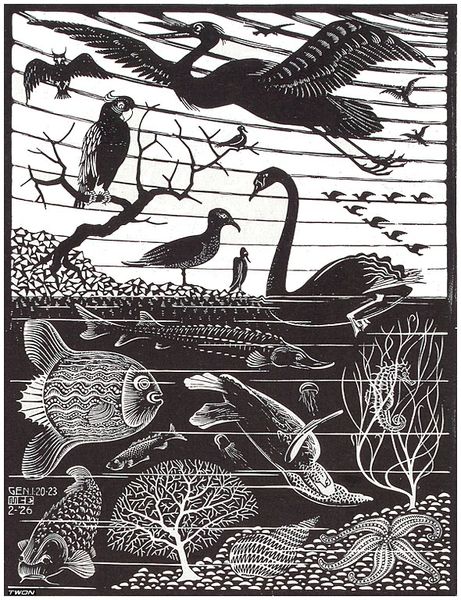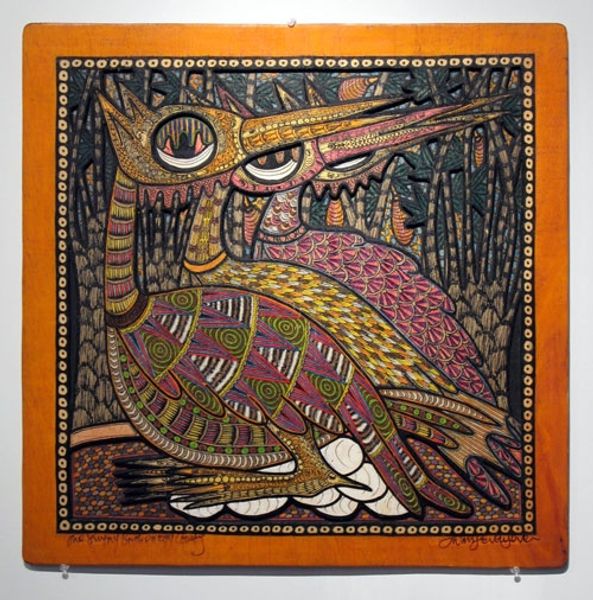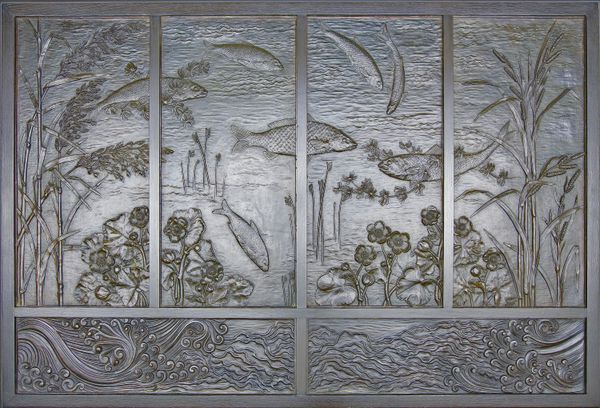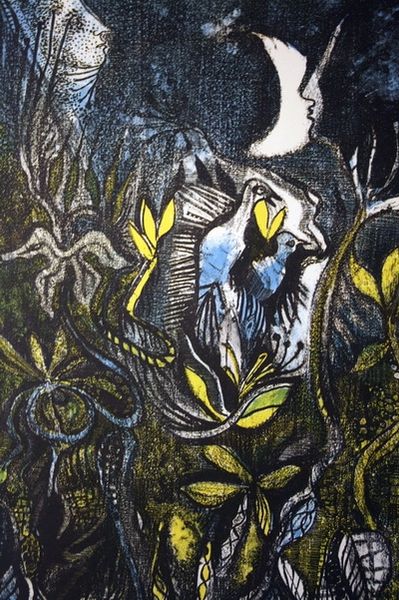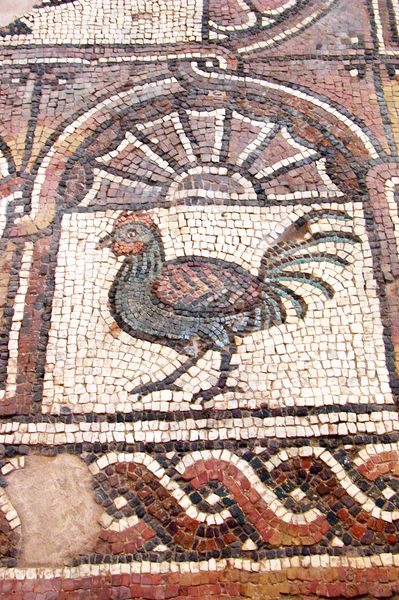
mosaic
#
mosaic
#
naturalistic pattern
#
landscape
#
bird
#
figuration
#
decorative-art
#
pattern in nature
#
motif
Copyright: Public domain
Editor: Here we have Giandomenico Facchina’s mosaic in the dining hall room of the Sainte-Barbe library in Paris. The mosaic style gives the work a very textured and almost pixelated feel. What stands out to me is the way the artist rendered natural forms, especially the bird. How do you interpret this work in the context of its setting? Curator: Well, it's crucial to consider that this mosaic was created for a library dining hall. The choice of depicting a bird nestled amidst foliage isn't merely decorative. How does this pastoral scene function as a subtle commentary on intellectual life, or even sanctuary and freedom, for the students using that space? We have to think about the intersections of class, education, and access too. Editor: I never considered the social implications. How does Facchina’s choice of materials play into that idea? Curator: Mosaics, traditionally associated with wealth and permanence, here offer a space of quiet contemplation away from institutional authority. By presenting idealized nature within this framework, the mosaic softens rigid social structures in intellectual spaces, like dining rooms of prestigious libraries. Who benefits most from these tranquil environments and how does access shape academic success? Editor: So the artwork could reflect aspirations for creating equitable social change within hierarchical academic institutions. It is more than just decorative art. Curator: Exactly. Understanding that changes everything. It gives context to the subject. Editor: This has definitely broadened my perspective. Thanks so much! Curator: My pleasure! There’s always more to consider.
Comments
No comments
Be the first to comment and join the conversation on the ultimate creative platform.
